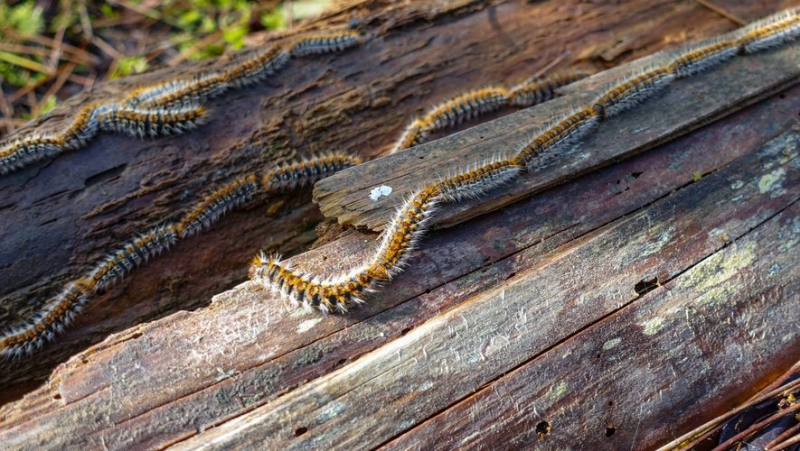Processionary caterpillars are back: how to react if you see them and what to do if you have been in contact ?

Contre les chenilles processionnaires, les bons gestes à adopter
They move in single file in spring in forests or gardens. Processionary caterpillars have the unfortunate disadvantage of being covered in stinging hairs which cause itching and even serious allergic reactions. May 18, a day dedicated to these insects, is an opportunity to remind people what to do if you come across them.
As every spring, the processionary caterpillars leave their hibernation and return to gardens and forests. They do not bite or sting. Their weapons are their stinging hairs, contact with which can cause inflammatory reactions that are sometimes serious.
Where and when are they found ?
The pine processionary caterpillar (orange-brown in color) is present over a very large part of the French territory, mainly in the South, the center and the West. It is mainly encountered between January and May but also between October and December in oceanic regions.
The oak processionary caterpillar (silver gray) is mainly present in the northeast, the Paris region and the northwest of France and can be present in southern regions. It is mainly observed between April and July.
What are the signs of contact with a caterpillar ?
Stinging hairs can in particular produce effects on the skin (redness, itching, skin pain, localized edema, hives and sometimes small blisters), on the eyes (conjunctivitis, tearing, eye pain) or the respiratory tract (cough, difficulty breathing). .
But direct contact is not necessarily necessary since its hairs detach and are transported by the effect of the wind. This is why the National Health Safety Agency (ANSES) issues several practical recommendations to avoid them:
do not approach or touch the caterpillars or their nests. This advice is particularly aimed at children; stay away from trees with nests. These are oaks and pines.; wear long clothes when walking in the forest or near infested trees; avoid rubbing your eyes during or after returning from a walk; wash the fruits and vegetables from your garden well; avoid drying laundry next to infested trees; if exposure to caterpillars is suspected, take a shower and change clothes; in the event of signs of a vital emergency (respiratory distress), call 15.
Animals too
Processionary caterpillars are also the cause of cases of poisoning in animals: dogs represent 92% of cases and cats around 7% of cases. In the event of exposure, very rapid veterinary care is essential.




